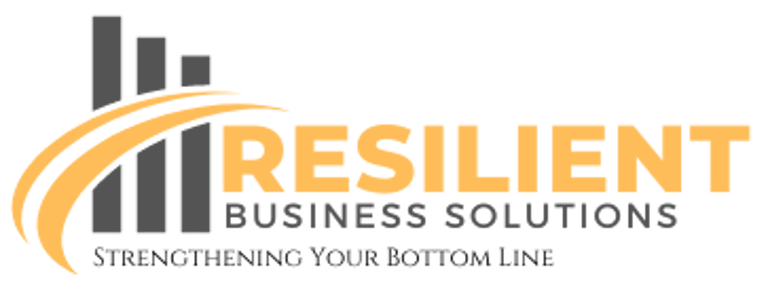Understanding Accounts Payable and Receivables: A Beginner’s Guide
Get a clear understanding of accounts payable and receivables, and learn how effective management of these financial components can enhance your business's cash flow and overall financial health.
4 min read


Introduction to Accounts Payable and Receivables
Accounts Payable (AP) and Accounts Receivable (AR) are fundamental components of a business's financial ecosystem, playing critical roles in managing a company's cash flow. Understanding these terms is crucial for anyone delving into the realms of business finance, especially beginners.
Accounts Payable (AP) refers to the money a company owes to its suppliers or vendors for goods and services received. This encompasses any short-term debt a company incurs as part of its regular operating activities. AP represents an obligation to pay off the debt within a stipulated period, which is pivotal for maintaining good relationships with suppliers and managing the company's financial obligations efficiently.
On the flip side, Accounts Receivable (AR) represents the money owed to a company by its customers for products or services delivered but not yet paid for. This essentially reflects the outstanding invoices or amount due from customers. AR is crucial for a company’s revenue cycle, ensuring that the sales made translate into actual cash inflows, thereby ensuring liquidity.
The importance of AP and AR in business finance cannot be overstated. Properly managing Accounts Payable helps avoid cash crunches by ensuring timely payments, which in turn can help businesses negotiate better credit terms with suppliers. Efficient management of Accounts Receivable ensures that invoices are collected on time, thus sustaining the business’s revenue stream. This delicate balance between AP and AR is essential for maintaining the financial health of any business, as it influences the company's ability to meet its obligations, invest in growth, and maintain operational continuity.
Ultimately, both AP and AR play indispensable roles in ensuring a business can sustain its operations without facing liquidity issues. Mastering these concepts is not just about performing accounting entries but also about strategic financial management to support long-term business success.
The Importance of Effective Management of Accounts Payable and Receivables
Effective management of accounts payable (AP) and accounts receivable (AR) is vital for any business looking to maintain financial health and operational efficiency. Managing these accounts efficiently can significantly improve cash flow, reduce operational costs, and enhance relationships with both suppliers and customers.
One of the primary advantages of diligent AP and AR management is the optimization of cash flow. Businesses can avoid cash shortages by ensuring that receivables are collected timely and that payables are met within agreed terms. For example, prompt invoicing and consistent follow-ups on overdue accounts can accelerate receivables, allowing businesses to maintain a steady stream of working capital. Similarly, aligning payment terms with suppliers strategically can help businesses manage outflows more predictably.
Reduced costs are another benefit of an effective management system. Poor management practices can lead to penalties, interest on late payments, or missed opportunities for early payment discounts. By negotiating favorable payment terms and maintaining a schedule for invoices, businesses can take advantage of these cost-saving opportunities. For instance, agreeing on extended payment terms with suppliers can provide the business with the flexibility needed during cash-tight periods.
Furthermore, strong management of AP and AR fosters healthy relationships with stakeholders. Consistently paying suppliers on time can build trust and may offer the company better credit terms in the future. Conversely, reliable collection of payments from customers ensures the business has the cash to meet its obligations, thus maintaining its credibility and operational stability.
Adopting modern technology and software can streamline the management processes. Tools that automate invoicing, payment tracking, and reminders for overdue accounts can save time and reduce errors. These systems provide real-time insights into the company’s financial status, allowing for timely decision-making and efficient financial planning.
Poor management of accounts payables and receivables can have severe consequences, including liquidity crises and potential insolvency. Therefore, implementing best practices such as timely invoicing, proactive follow-ups, strategic negotiations, and utilizing technology is essential. By doing so, businesses can ensure a stable and efficient operational environment, conducive to growth and fiscal responsibility.
Strategies to Optimize Accounts Payable and Receivables
Optimizing the management of accounts payable (AP) and receivables (AR) is critical for maintaining healthy cash flow and ensuring the overall financial health of a business. Adopting a structured and consistent approach can significantly enhance efficiency and reduce errors. Here are some essential strategies to consider:
1. Conduct Regular Audits: Regular audits are crucial in identifying discrepancies, inconsistencies, and potential areas for improvement within AP and AR processes. By systematically reviewing financial records, businesses can ensure accuracy and compliance with relevant regulations, reducing the risk of financial misstatements and fraud.
2. Foster Effective Communication: Maintaining clear and open lines of communication with clients and suppliers is essential. Promptly addressing any concerns or discrepancies can prevent misunderstandings and build stronger relationships. In turn, this can result in more favorable payment terms and enhanced cooperation during financial transactions.
3. Maintain Accurate Records: Accurate record-keeping is the backbone of effective accounts payable and receivables management. Employing a robust system for tracking all invoices, payments, and receivables ensures data integrity and simplifies the auditing process.
4. Leverage Automation Tools: Implementing automation tools and technologies can significantly streamline AP and AR processes. Software solutions offer functionalities such as automated invoice generation, electronic payment systems, and real-time tracking of receivables. These tools not only enhance efficiency but also minimize human error and reduce administrative costs.
5. Implement Structured Policies: Developing and adhering to standardized policies for payments and collections is vital. This includes setting clear payment terms, establishing credit policies, and consistently following up on overdue accounts. Structured policies ensure fairness and predictability, improving both receivables management and supplier relationships.
By optimizing accounts payable and receivables through these strategies, businesses can achieve better financial forecasting and healthier cash flow. Ultimately, this leads to improved overall business performance and sustainability. Addressing these key areas will not only enhance day-to-day operations but also provide a solid foundation for long-term success.
When You Are Ready
Ready to simplify your business finances? At Resilient Business Solutions, we’re here to take the stress out of managing your books so you can focus on what you do best—growing your business. Whether you need help with bookkeeping, invoicing, or managing payables and receivables, we’ve got you covered. Contact us today to learn how we can support your business with reliable, expert financial services. Let’s build a resilient future together!
Strengthening Your Bottom Line
Customized financial support to empower your business success.
Get Our Free 50+ Page Small Business Success Guide Now
© 2024. All rights reserved.
